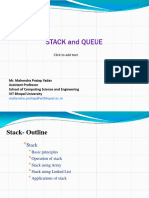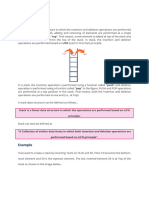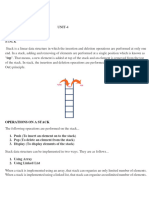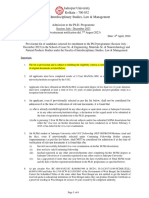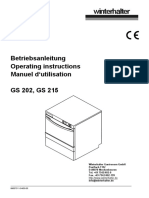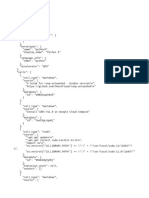0% found this document useful (0 votes)
28 views31 pagesSimplestack Unit 3 Part 2
The document explains how to implement a stack using a singly linked list, detailing the structure of nodes, stack operations (push, pop, peek, display), and their respective algorithms. It highlights the advantages of linked lists over arrays, such as dynamic memory allocation and the absence of overflow issues. Additionally, it covers applications of stacks, various notations for arithmetic expressions, and the conversion of infix expressions to postfix notation.
Uploaded by
Irfan NanasanaCopyright
© © All Rights Reserved
We take content rights seriously. If you suspect this is your content, claim it here.
Available Formats
Download as PDF, TXT or read online on Scribd
0% found this document useful (0 votes)
28 views31 pagesSimplestack Unit 3 Part 2
The document explains how to implement a stack using a singly linked list, detailing the structure of nodes, stack operations (push, pop, peek, display), and their respective algorithms. It highlights the advantages of linked lists over arrays, such as dynamic memory allocation and the absence of overflow issues. Additionally, it covers applications of stacks, various notations for arithmetic expressions, and the conversion of infix expressions to postfix notation.
Uploaded by
Irfan NanasanaCopyright
© © All Rights Reserved
We take content rights seriously. If you suspect this is your content, claim it here.
Available Formats
Download as PDF, TXT or read online on Scribd
/ 31
















